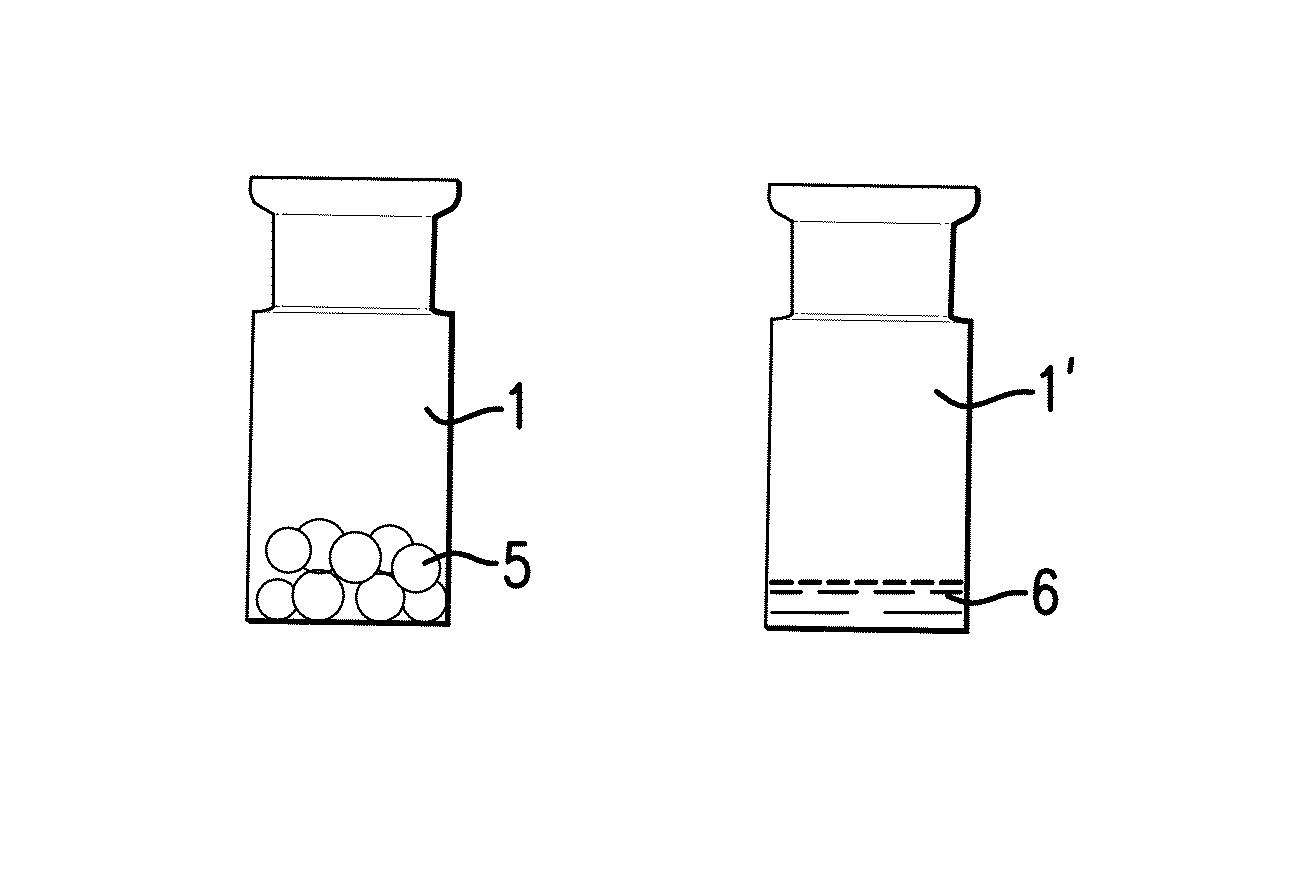Method to produce a medicinal product comprising a biologically active protein and the resulting product
Inactive Publication Date: 2014-01-16
INTERVET INC
View PDF19 Cites 8 Cited by
- Summary
- Abstract
- Description
- Claims
- Application Information
AI Technical Summary
Benefits of technology
This patent describes a method for quickly drying biologically active proteins by using a support and heat radiation. The method involves freezing the protein and a solvent, and then using heat to sublimate the solvent. By positioning the protein on a support that allows heat and radiation to pass through, the method can provide a fast and efficient way to dry the protein without losing its activity. The method can also be used to dry multiple proteins simultaneously on a support. The technical effect of this patent is to provide a faster and more efficient way to dry sensitive proteins while maintaining their biological activity.
Problems solved by technology
However, this reference does not disclose the lyophilisation of a composition comprising a biologically active protein starting from a solution comprising at least 20% w / w of a non-polymeric sugar.
For biologically active proteins however this is not an option.
Method used
the structure of the environmentally friendly knitted fabric provided by the present invention; figure 2 Flow chart of the yarn wrapping machine for environmentally friendly knitted fabrics and storage devices; image 3 Is the parameter map of the yarn covering machine
View moreImage
Smart Image Click on the blue labels to locate them in the text.
Smart ImageViewing Examples
Examples
Experimental program
Comparison scheme
Effect test
example 2
[0040 is a second example of freeze-drying high sugar compositions.
example 3
[0041 is a third example of freeze-drying high sugar compositions.
example 4
[0042 is a fourth example of freeze-drying high sugar compositions.
[0043]Example 5 is a fifth example of freeze-drying high sugar compositions.
[0044]Example 6 provides stability data for medicinal products according to the invention.
the structure of the environmentally friendly knitted fabric provided by the present invention; figure 2 Flow chart of the yarn wrapping machine for environmentally friendly knitted fabrics and storage devices; image 3 Is the parameter map of the yarn covering machine
Login to View More PUM
| Property | Measurement | Unit |
|---|---|---|
| Fraction | aaaaa | aaaaa |
| Fraction | aaaaa | aaaaa |
| Fraction | aaaaa | aaaaa |
Login to View More
Abstract
The present invention pertains to a method for producing a medicinal product comprising a biologically active protein comprising the steps of providing an aqueous composition comprising a solvent, the biologically active protein and between 20% w / w and 60% w / w of a non-polymeric sugar, freezing the composition, thereby forming at least one frozen body comprising the solvent in frozen form, putting the frozen body in a drying apparatus while being carried by a support, the support comprising one or more restraining elements that define one or more boundaries of the support, wherein at most 30% of the surface of the body is contiguous with the one or more restraining elements, reducing the pressure in the drying apparatus below atmospheric pressure, providing heat to the body in order to sublimate the frozen solvent of the body and obtain a dried body. The invention also pertains to a product obtainable by this method.
Description
CROSS-REFERENCE TO RELATED APPLICATIONS[0001]This application is a non-provisional application that claims priority under 35 U.S.C. §119 (e) of provisional application U.S. Ser. No. 61 / 669,797, filed Jul. 10, 2012, the contents of which are hereby incorporated by reference in its entirety.FIELD OF THE INVENTION[0002]The present invention is in the field of preservation of biologically active proteins, in particular for storage purposes. In particular the present invention pertains to a method for producing a medicinal product comprising a biologically active protein, the method comprising preservation of the protein by freeze-drying in a protective matrix comprising a sugar. The invention also pertains to the resulting product, which in particular is a freeze-dried body comprising the protein, stabilised by the sugar.BACKGROUND ART[0003]Biologically active proteins (also denoted simply “proteins” in this specification) are generally unstable when stored in solid media or liquid solu...
Claims
the structure of the environmentally friendly knitted fabric provided by the present invention; figure 2 Flow chart of the yarn wrapping machine for environmentally friendly knitted fabrics and storage devices; image 3 Is the parameter map of the yarn covering machine
Login to View More Application Information
Patent Timeline
 Login to View More
Login to View More IPC IPC(8): A61K47/36A61K38/00
CPCA61K47/36A61K38/00A61K47/26A61K2039/5254A61K9/19A61K39/155A61K39/175A61K39/235C12N2710/10334C12N2760/18434C12N2760/18711
Inventor O'CONNELL, KEVINBUCHANAN, SANDHYA
Owner INTERVET INC
Features
- R&D
- Intellectual Property
- Life Sciences
- Materials
- Tech Scout
Why Patsnap Eureka
- Unparalleled Data Quality
- Higher Quality Content
- 60% Fewer Hallucinations
Social media
Patsnap Eureka Blog
Learn More Browse by: Latest US Patents, China's latest patents, Technical Efficacy Thesaurus, Application Domain, Technology Topic, Popular Technical Reports.
© 2025 PatSnap. All rights reserved.Legal|Privacy policy|Modern Slavery Act Transparency Statement|Sitemap|About US| Contact US: help@patsnap.com



